Literary Perspectives
Literary Perspective - Symbolism
October/13/2016 01:29 PM

Credit: Outlook Co.
(Wikimedia Commons)
Symbolism
A literary symbol is a material object that takes on psychological significance, whereas a metaphor involves the comparison of an entity, a place, or an event to a personality or a character’s behavior. Critics agree on definition, but an individual may evaluate a work of fiction and come up with a unique opinion, rather than a written-in-stone analysis.
In a story, the protagonist makes decisions influenced by the dominance of this symbol.
Literary Perspective - Women in Rebellion
October/13/2016 11:11 AM
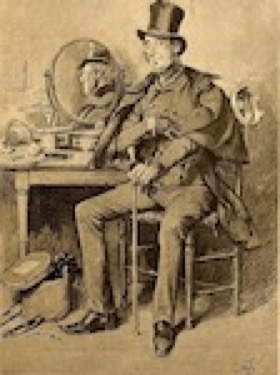
Credit: E. Hess
(Wikimedia Commons)
Women in Rebellion
As the women’s movement progressed from gaining the right to vote to acquiring freedom to pursue a career, reactions to equal status have not always been positive. Stereotypical problems include difficulty in combining a job and motherhood, fear of losing femininity, and desire to cling to indoctrinated roles.
Strangely, a woman sometimes rebels against patriarchal authority by rejecting independence rather than accepting it. Every decade she fights new battles and acquires political ground, while a traditional archenemy yanks her back.
In feminist literature, a patriarch can be any man—a minister, a father, a husband—even men in general. Although the device may be overdone, this technique is effectively used to address sensitive gender issues. In fiction, as in life, women can be their own worst enemies by not communicating, leading to lack of courage and assertiveness.
Literary Perspective - Quest for Cupid
October/13/2016 10:52 AM
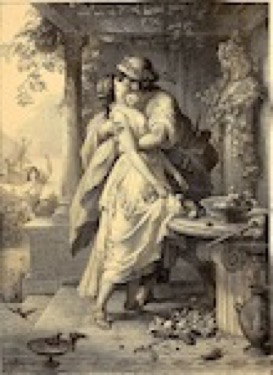
Credit: E. Hess
(Wikimedia Commons)
Quest for Cupid
Women in pursuit of affection have controlled romance fiction throughout the centuries. Although the hero appears to dominate stories, it is the heroine who manipulates plot. At the heart of the female sexual fantasy is a desire for exclusivity, or at least, that’s what women have been taught. In certain situations, this belief can be proven incorrect, but that stereotypical assumption is usually taken for granted.
The quest for a lover’s mind, body, and soul supports the foundation of matrimony. A contemporary, legally binding relationship is a partnership, and perhaps, an ideal environment to raise children. Few educated couples want the right to possess each other, but this psychological drive persists, a throwback to the past.
Tension between illusion and reality causes conflict between an individual’s perceived and actual world. When expectations remain unfulfilled, fantasy takes over. Fantasy is a psychological safety valve that routes disillusionment into a comfortable, soothing place. Some call this an inner light, while others describe it as mere daydreaming.
Epiphanies rarely involve unconditional love. When a character’s behavior appears altruistic during a revelation, motivating factors tend to be self-glorifying, often defensive. Even in progressive countries like the United States, social transitions are never immediate. Romance novels reflect an ongoing period of adjustment and adaptation.
Literary Perspective - Turbulence Beneath the Calm
October/13/2016 10:32 AM
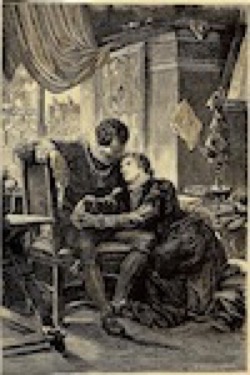
Credit: E. Hess
(Wikimedia Commons)
Turbulence Beneath the Calm
Women in transition are often portrayed with a calm demeanor in literary stories. Disputes remain low-key or nonexistent, unlike mass-market fiction in which arguments escalate to violence. These scenarios present exaggerations, inaccurate illustrations of reality, but skilled authors know the importance of achieving dramatic effect through understatement.
Beneath a quiet, unassuming woman lingers a passionate side she keeps concealed due to the dictates of society. Underlying turbulence within placid, easygoing heroines is a common device to counteract hysterical, drug-subdued portrayals. A high-strung woman meets disrespect unless her anxiety-driven personality is career-oriented.
In the past, creative energy could not be focused on a professional endeavor because it undermined a woman’s responsibility as a nurturer and caregiver. In contrast, men are frequently depicted suffering from neurosis, while an uncaring woman lurks nearby. Neither role is appealing.
Literary Perspective - Searching for Individuality
October/13/2016 10:14 AM
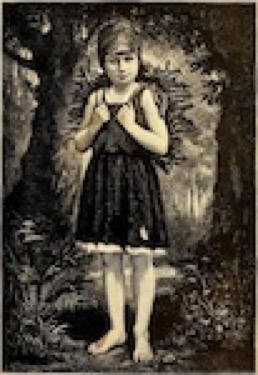
Credit: E. Hess
(Wikimedia Commons)
Searching for Individuality
The most difficult time in an adolescent’s life is finding a sense of identity in a world governed by overwhelming adult influence. A teenager feels pressure from parents and teachers to establish a “self” not far from the norm established by family and school. If Dad loves football, his son is expected to enjoy the sport. If Mom is a nurse, her daughter is encouraged to join the profession with enthusiasm.
This is not the pattern that life usually takes. Self-discovery often leads to loss of approval from an authority figure, followed by rebellion and impulsive mistakes. The damage done—sometimes permanent—destroys relationships and even lives.
Childhood impressions are indelible ink on the canvas of the mind. The protagonist acts on past experiences and aspires to higher goals or remains within the confining social structure defined in youth. A teen emerges from a struggling, often poor background to form a conclusion, make a transition, or set a course of action.
A good story establishes a sense of identity within the developing mind of a young adult. Ideally, this realization leads to social integration, emotional stability, and finally, maturity.
Literary Perspective - Psychological Drama
October/12/2016 10:38 PM

Credit: Gabriel Gaston Context Croft
(Wikimedia Commons)
Psychological Drama
Imagination is a psychological distraction and a method of creation. When reality falls short of expectation, the inventive part of the intellect takes over and explores alternatives to this unacceptable situation. Some call it brainstorming, a developmental procedure that can be examined and displayed on a whiteboard. The mystery diminishes under sober scrutiny, but the art of creating can be taught. Few begin with a blank slate, which would be similar to starting with a blank mind. Every conceptualized scenario has its inherent makeup, just like a human is a complex network of genes.
An author uses this discovery process to write fiction. Within a distant realm of the brain is a womb where characters and settings are conceived. Psychological drama can be lighthearted or serious, depending on mood and temperament. Background, religion, and education contribute to the style and tone.
The merging of fantasy and reality is at the core of the paranormal story. Mass-market analysts assert that a story is purely entertainment. Readers of commercial fiction do not consult study guides to comprehend a hidden symbol, nor does a movie theater audience probe a film’s inner message. Being oblivious, however, does not mean the profound reason for creation is nonexistent. Differences exist in the quality of the finished work, but every writer redefined the world within a unique plot line.
Literary Perspective - Characters of the Mind
October/12/2016 03:14 AM
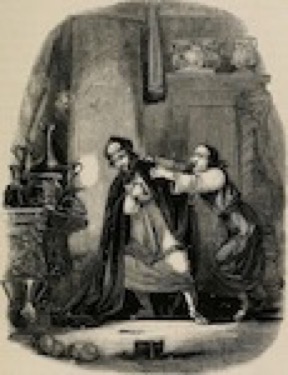
Credit: Chapman and Hall
(Wikimedia Commons)
Characters of the Mind
Aliens, ghosts, and monsters make a regular appearance in science fiction and horror stories. Interest will not wane as otherworldly entities manifest themselves. What makes creators of paranormal plots successful?
Their secret lies in the ability to frighten and enlighten. Excursions into unknown recesses of the brain form the basis for intelligent literature in all periods. Excitement the adult experiences when watching a horror movie may not be suitable for children, but ironically, subject matter that educated censors consider inappropriate in a cinema may be praised in an English classroom.
At the end of a film, the viewer realizes the tale was mere entertainment and shrugs off uncomfortable and unfamiliar concepts, yet at the end of a literature course, the student walks away with changed beliefs about this world and other realms that may exist, even if this controversial place is only a figment of the imagination. Characters of the mind reside within this elusive psychological setting, symbols of repressed emotions and buried needs.
This rift between drama and literature has been present for centuries. In the early days of stage performances, the church frowned on deviant attitudes presented in plays before the masses. The condemnation resulted in suppression of creativity, a futile shot at thought control. Ingenious writers found allegorical and euphemistic ways around state and clerical restrictions.
In contemporary society, authors exercise freedom of expression, even if the process of conception scares someone. A hidden message emerges from every unexpected, illusory visitor. Attempts at smothering feelings such as fear, and refusing to acknowledge forbidden desire, lead to a stronger manifestation of the emerging character.
The protagonist struggles with an unrecognized problem, wish, or belief. A supernatural being wins the battle and makes an appearance. An astute writer demonstrates ability to reach the heart of the disturbance.